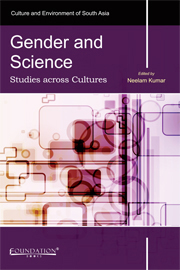Book contents
- Frontmatter
- Contents
- List of Contributors
- Acknowledgements
- Introduction: Reflections and Realities across Cultures
- Section I Approaches and Perspectives
- Section II Illustrative Examples
- 6 Women and Science in the Netherlands: A Dutch Case
- 7 Japanese Women Scientists: Trends and Strategies
- 8 Saudi Women: Their Role in Science and Education
- 9 Changing the Facts: Gender Dimensions of the South African Public Science System
- 10 Demographic Inertia and the Glass Ceiling in American Science (1979–2000)
- 11 Women in Science in France
- 12 Women and Science: Issues and Perspectives in the Indian Context
- Conclusion: The Persistent Patterns!
- Bibliography
- Index
7 - Japanese Women Scientists: Trends and Strategies
from Section II - Illustrative Examples
Published online by Cambridge University Press: 05 May 2013
- Frontmatter
- Contents
- List of Contributors
- Acknowledgements
- Introduction: Reflections and Realities across Cultures
- Section I Approaches and Perspectives
- Section II Illustrative Examples
- 6 Women and Science in the Netherlands: A Dutch Case
- 7 Japanese Women Scientists: Trends and Strategies
- 8 Saudi Women: Their Role in Science and Education
- 9 Changing the Facts: Gender Dimensions of the South African Public Science System
- 10 Demographic Inertia and the Glass Ceiling in American Science (1979–2000)
- 11 Women in Science in France
- 12 Women and Science: Issues and Perspectives in the Indian Context
- Conclusion: The Persistent Patterns!
- Bibliography
- Index
Summary
The aim of this chapter is to consider the status of Japanese women scientists. First, the historical conditions of Japanese women scientists have been surveyed, and then their present situation is examined and described. Finally, new strategies for women in science and technology (S&T) in the twenty-first century are introduced.
It is easy to understand why there were few women scientists in the past. The simple fact is that women were excluded from the universities and academic associations. The question is, why are there still so few women scientists now that such discrimination has ended? Institutional equality with men does not seem to be enough for women to be fully active as scientists, even though they have far better circumstances than before; they can enter graduate schools and set themselves up in science if they wish. Why then, in spite of this, do so few women become scientists or engineers?
The fact that women's careers may be interrupted by marriage, childbirth, and childrearing is not a sufficient reason for there being such few women scientists. These difficulties are just as common in other professions. The ‘leaking pipeline’ and ‘glass ceiling’ that women meet in the pursuit of their careers are not problems specific to women scientists. All this suggests that we should consider the nature of scientific knowledge as well as the social problems associated with it (Sonnet, 1995: 8–13).
- Type
- Chapter
- Information
- Gender and ScienceStudies across Cultures, pp. 150 - 171Publisher: Foundation BooksPrint publication year: 2012



